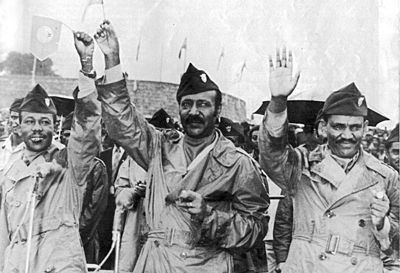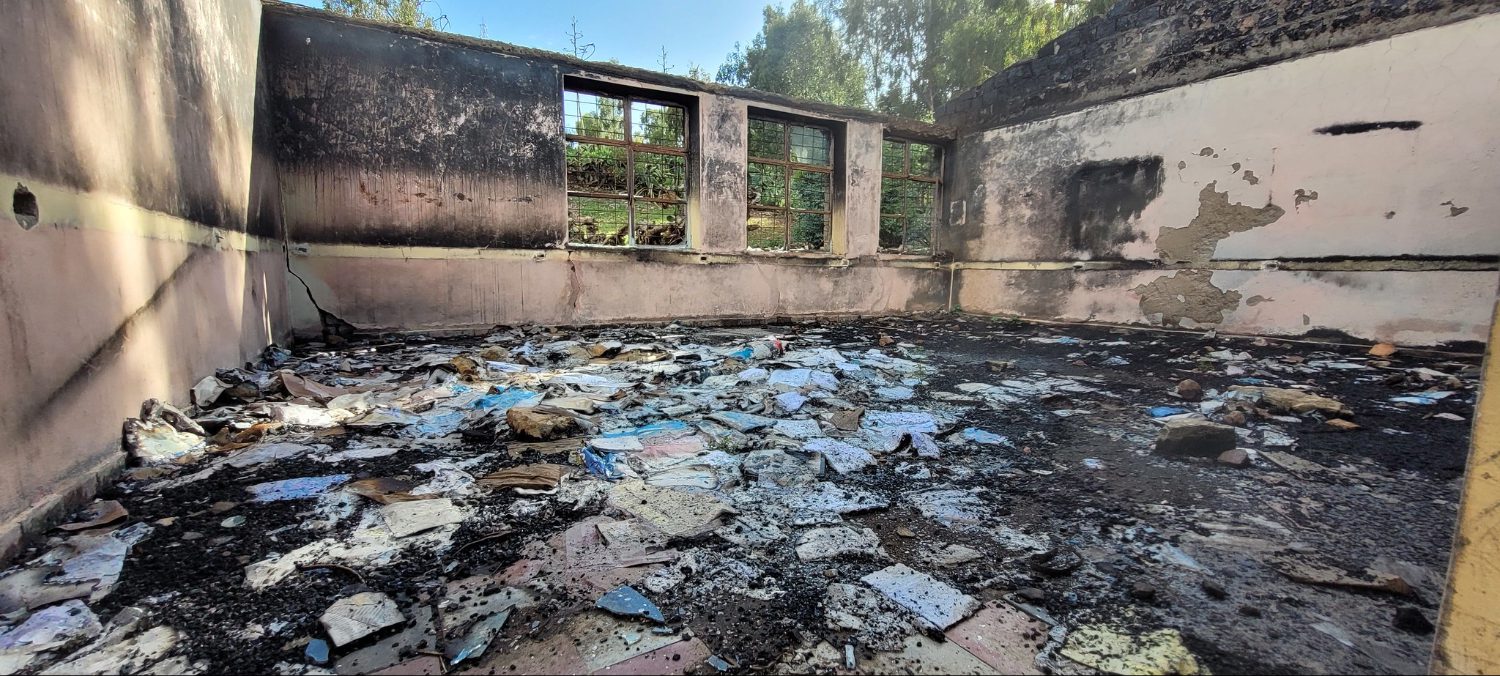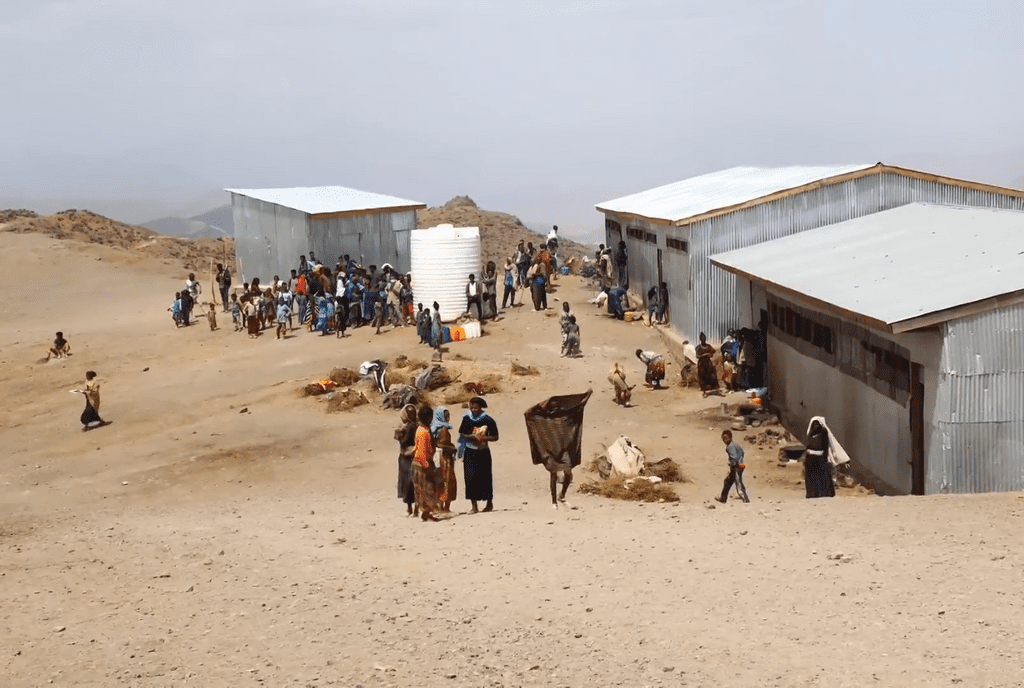State collapse in Ethiopia cannot be ruled out. It could take one of several different forms. It may happen soon.
Following the military collapse of the Ethiopian National Defense Force, it is essential for Ethiopians and international partners to assess what state collapse might mean. There is the short-term prospect of a state crisis, notably turmoil in the national capital. There is the longer-term issue of what a protracted state collapse might mean. Chaos has many forms.
This paper draws on Ethiopia’s history as well as parallels with other countries, to help us examine this second issue, namely the possible contours of a failed or fragile Ethiopian state over the medium or longer term.
There are five (overlapping) scenarios of state fragility, failure or collapse: (i) state contraction; (ii) state disassembly; (iii) state inversion; (iv) a security perimeter state; and (v) empire dissolution or state fragmentation. All are possible. Some are happening. These long-term trajectories will be determined in part by decisions taken in the next few days.
Many Ethiopian citizens, along with scholars and policymakers, have long held an assumption that the Ethiopian state is exceptional in Africa, that it has a legitimacy and durability that is lacking in other countries on the continent. Among the arguments made in favor of this are Ethiopians’ resistance to European colonial conquest and its emperors’ success in determining their state boundaries, the continuity of some of its governing institutions, the enduring resonance of its foundational myth, and the much-observed fact that highland Ethiopians show a respect for state authority that sometimes strays into reverence. But we should not be deceived. But we should be cautious. Alongside the ‘great tradition’ of heroic centralizing rulers there is also a less-told history of state weakness, of multiple and contending power centers, and of episodes of defeat, fragility and even collapse.
In a recent article in Foreign Policy, Robert Kaplan wrote that Ethiopia is ‘simply too substantial to fall apart’. That’s bad history, hope rather than argument, and certainly not the basis for policy. It is equally valid to see Ethiopia as an empire, its dissolution long overdue. The collapse of land-based empires can be very traumatic.
Histories
In her 1948 book, The Government of Ethiopia, Dame Margery Perham cited ‘an official British report of 1906 [which] states that [Emperor] Menelik is an absolute despot and a few paragraphs later remarks that his power does not extend twenty miles beyond his palace.’ This was the reality of the Empire until its dissolution. The institutions of state were like the grand façade of a classical palace, behind which was a ramshackle jerry-built edifice that could easily crumble. Ethiopian rulers could marshal enormous armies and win battlefield victories but beyond the immediate vicinity of court and army camp, the state barely existed.
This was the nature of many pre-modern states around the world. In a sense, all pre-institutionalized states were ‘fragile’. The 20th century emperors—Menelik and Haile Selassie—were keenly aware of the fragility of their government, the limits of their power and the precarious nature of its independence. They were also conscious of the problematic legacies of military mobilization. It’s easier to trumpet a call to arms than to demobilize the regiments, and provincial lords hardened in battle can easily become warlords in their own right.
The myth of unbroken statehood skates over episodes of fragmentation (such as the ‘era of the princes,’ zemane mesafint, approx. 1770-1855), defeat (the British expedition against Teodros in 1868, the Italian invasion and occupation 1935-41) and near-failure (the post-revolutionary chaos of the 1970s). According to the imperial Abyssinian script, these reverses are times in which God was testing Ethiopians, after which the natural order was restored. This narrative may be comforting to true believers in the martial-imperial creed and can help them persevere amid times of turmoil and bloodshed. But an objective assessment is that Ethiopia has a tradition of fragmentation which is no less real than its history of strong rulers.
The modern Ethiopian state was also built as an empire, and its incomplete and still contested legacy of imperialism and counter-imperialism lies at the heart of the crisis today.
If Ethiopia is to follow its historical patterns, we could see state contraction—the direct authority of the ruler restricted to the environs of the capital and a core constituency. Or we could see a disassembled state, in which the ruler seeks to manage a confederacy of rivalrous semi-autonomous principalities.
Since the restoration of central power in the middle of the 19th century, Ethiopia’s kings tried to do three things simultaneously: to preserve the sovereign independence of Ethiopia, to build state institutions, and also to keep the imperial-feudal order intact, with its ethnic hierarchy and its exploitative political economy.
Building on the legacy of Menelik, Emperor Haile Selassie secured the boundaries of the empire through diplomacy, not the extension of administration. Beyond Shewa and a handful of towns, he governed through the allegiance of provincial aristocrats. He won their loyalties through mystical authority and material reward, but faced a constant round of rural insurrections. Haile Selassie was exceptionally skilled in statecraft but ultimately he was unable to manage the tensions. In September 1974, when the social, economic and political crisis came to a head, it ultimately took no more than a taxi drivers’ strike and half a dozen tanks to bring the Solomonic dynasty to an end.

What followed was a hybrid of a military junta and a Marxist-Leninist revolutionary party state. The Dergue attempted an accelerated institutionalization of the country: it built a massive army and set about titanic socio-economic transformation. It failed. Mengistu Haile Mariam—major, colonel, president—seized power as a representative of the lumpenmilitariat, viscerally channelling the anger of the oppressed, and gradually metamorphosed into a military commander-in-chief, deliberately invoking a lineage from the 19th century Emperor Teodros, a bandit who became a king. Mengistu was calculating, cunning and ruthless. But he never ruled the whole country. In the Red Terror he destroyed the core of the student movement and with it the hope of a civic republicanism. The Dergue’s wars failed to bow the provincial movements, and it brought the country to its knees.
EPRDF State-building
The EPRDF leaders were keenly aware of Ethiopia’s fragility: they had seen the possibility of state collapse close up. They feverishly built not just physical infrastructure but also the institutions of a state. Many parts of Ethiopia which had only experienced military occupation, or civil war, during the 1970s and 1980s, began to see the material manifestations of civil administration for the first time.
It was a huge experiment in building a developmental state, which didn’t delivery democracy but did provide stability and growth for the greater part of the country. Meles Zenawi was resolutely secular and saw the mythology of the state as a resource to be exploited for his political project. He tried to retain Ethiopians’ inclination towards respect for the state while subtracting the substantive content of the Abyssinian state myth, which he dismissed as ethnic chauvinism.
In the Ethiopian highlands the idea of what it is to be a state—‘stateness’—is encapsulated in the notion of unified power (mengist). The EPRDF exploited the tradition of displaying respect for the ruler. We need to see electoral outcomes through this lens, and not necessarily interpret an overwhelming vote for the incumbent either as evidence for massive fraud nor popular acclaim, but rather the voters’ preference for choosing the winner.
The EPRDF, true to its Marxist-Leninist origins, insisted that the material element in state-building was the crucial factor. The 2002 Foreign Affairs and National Security white paper identified overcoming poverty as the central challenge for national security and decried ‘jingoism with an empty stomach.’ Meles’s developmental state strategy was, at root, a wager that Ethiopia could become prosperous before its internal tensions tore it apart. The hope was that a new generation of Ethiopians, materially better off and better educated, would no longer see the old zero-sum contests over the identity of the polity as issues worth dying for or killing for. If this rapid growth wasn’t achieved, the white paper argued, ‘The prospect of disintegration cannot be totally ruled out.’
The EPRDF also tried to reinvent Ethiopia as a post-imperial ‘nation of nations.’ The formula was ethnic federalism, designed in 1991 jointly with Oromo leaders. The 1974 revolution had swept away feudalism, the 1991 revolution was intended to sweep away Abyssinian colonialism. The principle of cultural, linguistic and political emancipation of the nations, nationalities and peoples of Ethiopia was acclaimed by many, but the practice was that formal decentralization served as a façade for central control. The EPRDF state was a highly centralized police state: its promise of democracy was not fulfilled.
Meles was acutely aware of the tensions and expressed the hope that rapid economic growth would create conditions for social change and long-term stability, including managed democratization. He hoped that economic growth would run faster than the tide of democratic aspiration and identity politics. He centralized power, undermining the animating spirit behind the federal constitution. The strategy needed skilled political management, and it did not survive Meles’s death in 2012. Haile Mariam Dessalegn is a devout Pentecostalist in his personal life but his politics remained secular. The Ethiopian economy grew fast under his premiership, but the EPRDF lost its way—it was neither the vanguard of development nor the forum for democratization.
Some Ethiopians hated the Tigrayans at the heart of the EPRDF for betraying the promise of federal democracy. Others hated them because they wanted to be in their shoes.
The EPRDF did not succeed in forging a new national narrative. To the contrary, the ethnicization of political life generated division and fostered an active nostalgia for the unitary state, including its martial-imperial mythology, among important constituencies at home and in the diaspora. Its failure at governing diversity in turn generated a new national crisis. As with 1974 and 1991, a new dispensation was needed. Important proposals were developed. This time around there was high hope that the national challenges would be resolved peacefully by dialogue.
Abiy inherited many assets: a growing economy and a sterling reputation among donors, international financial institutions and private sector investors, peace and cooperation with all neighbors save Eritrea, and strong core institutions—party, army, treasury and foreign ministry. He also faced the challenge of reconfiguring Ethiopia’s national political settlement to bring democracy, human rights, and civic identity politics into a new alignment.
Abiy lacks the skills of calculus, consultation and statecraft possessed by his predecessors. His aspirations far exceed his capacities, and he appears unready to recalibrate in the face of adversity. In just three years, Abiy has dismantled the actually-existing institutions that made Ethiopia function as a state. It’s not clear whether this was through prior design or whether in each case the decision seemed opportune—it was easier to banish difficulties than to face them. Taking the path of least political resistance at each stage is a recipe for state un-building. He dissolved the EPRDF (which in some respects was stronger than the civil administration), reshuffled the army in a manner that rendered it ineffective and most recently undermined the foreign ministry, saying that the diaspora (and their social media campaigning) does a better job of representing the country. Abiy has minimized the deliberative process in policymaking: he is the ultimate personal conviction politician.
In place of statecraft and the discipline of governmental institutions, Abiy has reinvented the mythology of a nation blessed by God and a state handed down from absolutely splendid ancestors, in the service of his personal vision of a country with a divine destiny that only he can deliver. He is a political Pentecostalist, not only in his church-based constituency and his rhetorical style, but also in his doctrine that salvation requires abolishing any hierarchy or institutions that intermediate between the individual believer and the Almighty.
In Ethiopian history, charismatic leaders such as this have mobilized huge armies and sometimes won great victories, but that has not been sufficient to build a state. The contemporary version of the feudal-imperial order is the political marketplace, whereby the ruler buys or rents the allegiances of subordinate elites by cash payment or licensing them to extract resources or in extremis pillage their neighbors. We have seen this in countries such as Sudan, South Sudan and the Democratic Republic of Congo. Ethiopia could follow this path, becoming a variant of the African fragile state—in the words of one of Isaias’s advisors, ‘an overdressed Zaire.’
Abiy has many of the instincts of a transactional politician who cuts bargains with clients. Before the Tigray war he was rapidly marketizing Ethiopia’s political arena. Under a canny political trader, a marketized political system might be viable, and indeed something along these lines may well be the future of the country. But the experience of other countries is that such a system usually emerges from mayhem rather than being a means of averting it.
It is possible that the war in Tigray might have begun with limited political objectives. However, the character of the war became far graver almost as soon as the coalition armies entered Tigray. Their common intent appears to have been to crush Tigray, an escalation in war aims that cannot easily be dialled down. Meanwhile, Abiy appears enthralled by his own messianic vision of himself and he cannot forsake his alliance with those who fervently believe in resurrecting martial imperial Abyssinia, not as a useful myth but as a real thing.

Leaders skilled in statecraft can unleash violence—and also can stop it. Mengistu was able to order an end to the mass murder of the Red Terror when he had accomplished his terrible goal. He could have negotiated with the EPLF and TPLF in 1989 and avoided his total defeat. A year later his only negotiating option was a dignified exit—which he failed to take.
Abiy shows no inclination to de-escalate, let alone negotiate, even in the face of military disaster. He has been feeding ethno-nationalist passions that he cannot control and which will outlast him.
Immediate Prospects
In the coming days, the Ethiopian political establishment faces an existential political challenge.
Faced with an onslaught and siege that threatens the survival of the Tigrayan people, the Tigray Defense Forces turned the tables militarily. The TDF has not only defeated the Ethiopian National Defense Forces but thoroughly destroyed them. The stated intent of the Government of Tigray is to compel the Federal Government to negotiate on the seven points that they announced on July 4. Should the Federal Government fail to negotiate seriously, then the TDF may use its military advantage to mount a counter-threat to Addis Ababa. Unless there is a negotiated compromise, this a formula for crisis in the Federal Government and, if sustained, mutually-assured starvation.
Abiy and his most fervent followers have yet to accept the reality of the recent military calamity and are hoping that they can mobilize men and material more speedily than the TDF can advance. Abiy has called for mass mobilization of militia and is sending tens of thousands of recruits to the front lines. This is futile. Eritrea is consolidating its military alliance with the Amhara region. If Eritrea arms the Amhara regional forces at scale it will make more capable than the national army and also change the balance of forces in the border dispute with Sudan.
The Oromo movement that brought the EPRDF to its knees is not sufficiently organized to present a clear alternative, though it may have the potential to veto any dispensation not to its liking. Abiy also faces the problem is that a message to Amhara to defend their land rings alarm bells among Oromos and others who have territorial disputes with Amhara region. There are reports of Oromo militia units defecting to the Oromo Liberation Army or acting independently.
The Prime Minister has shown no appetite for any negotiation. The responsibility for averting disaster therefore falls on the Ethiopian political establishment more widely, and on the international community. The time for rising to this challenge is desperately short. Events are unfolding fast.
There are several immediate dangers. One is bloodshed and mayhem in Addis Ababa. Tigrayans would be highly vulnerable to targeted violence. A second is the prospect of highly-charged clashing ethno-nationalisms across the faultlines of the federation. Another danger is a conflict within the political establishment as to who should rule and on what terms, bearing in mind that whoever can win this contest within the capital is not necessarily the one who can negotiate terms with the Tigrayans and others. A fourth scenario is the rapid escalation of the inter-state conflict with Sudan, which might bring in other external actors into a regional conflagration. The role of Eritrea is intrinsically unpredictable.
Five Scenarios of State Collapse
This paper concludes with some general observations to help us think through what state collapse—and/or end of empire—might mean over the medium or longer term. What follows are five variants. They overlap: several (or all) can occur at the same time.
State contraction is already happening, as the Federal Government tightens its grip on Addis Ababa and loses control over the rest of the country. The ultimate manifestation of this is when the ruler enjoys recognition as sovereign but real authority extends no further than the first checkpoint outside the capital city. This has happened in the past in Ethiopia and elsewhere in post-colonial Africa. It’s not a viable scenario for a stable state that delivers for its citizens. One reason for raising this possibility is that a country can go far down this track before residents of the capital, and diplomats stationed there, become fully aware that it is happening. Another reason for highlighting it is that many of those Ethiopians who are nostalgic for the days of imperial glory are in fact talking about a past in which the state was like this, though they may not realize it.
State disassembly is well advanced and indeed de-institutionalization was a policy choice by Abiy Ahmed. The historic version occurs when the ties weaken between a central ruler and provincial big men, so that the central ruler is continually negotiating the extent of his power. A contemporary version is the weakening of state institutions and their replacement by a political marketplace in which the trade in power is conducted using dollars and guns. Under this scenario, Ethiopia would come to resemble other large and turbulent African states, such as D.R. Congo, Nigeria or Sudan.
State inversion occurs when central power is so weak that the capital city is subordinate to one or more provincial rulers, or there is no functional authority there at all. In the Ethiopian case, the most probable scenario would be that the central government is the de facto junior partner to a powerful regional state, which conducts its own security and foreign policy and is the most powerful actor in setting a national political order to its taste—but is unable to impose its will on other regions.
A security perimeter state is a variant of the above. It happens when a minority entity—either within the state or bordering it—has both military power and motive to seek permanent security by preventing the emergence of an alternative power center that might threaten it. This could happen if Tigray is the most militarily powerful actor and adopts a zero tolerance strategy towards potential security threats in Ethiopia and Eritrea.
Empire dissolution or state fragmentation is when constituent parts of the polity formally break away or try to do so, setting up recognized or de facto secessionist states. The two contending descriptions for this process reflect contrasting ideological perspectives—whether it is the historically overdue dismantling of a hangover from the era of imperialism or whether it is the sundering apart of a precious unitary entity inherited from a glorious past.
Each of these versions of a weak or failed state or a dissolving empire could be a durable outcome. It might be turbulent and kleptocratic, but it could nonetheless endure. The greatest dangers of mass bloodshed occur right at the beginning of the collapse phase. Moreover, it can take years or even decades for such a new system to achieve a lasting political settlement, or the next best thing which is a workable political ‘unsettlement’.
In the meantime, none of the political actors today sees these outcomes as desirable. Each has ambitions to establish a different kind of state order and each is ready to fight to achieve it. Violent struggle for an unachievable goal is a recipe for mass atrocity. The longer the fighting, destruction and starvation continue, the more remote are those state-based outcomes, and the more likely it is that Ethiopians will have to settle for a future that resembles its most troubled epochs of the past.



